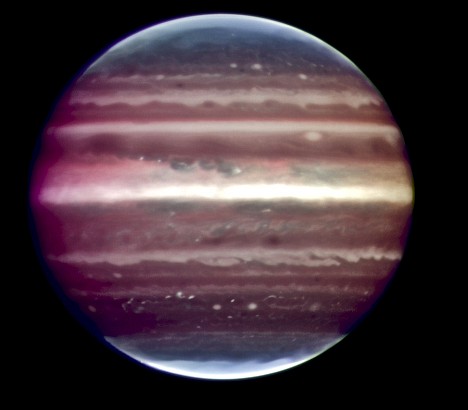Amazing: A new imaging technique that cuts out atmospheric blur has captured the sharpest ever images of Jupiter from the earth

A series of 265 snapshots were captured using a prototype instrument, the Multi-Conjugate Adaptive Optics Demonstrator (MAD), mounted on ESO's Very Large Telescope (VLT).
The new images of Jupiter prove the value of the advanced technology used by MAD, which uses two or more guide stars instead of one as references to remove the blur caused by atmospheric turbulence.
'This type of adaptive optics has a big advantage for looking at large objects, such as planets, star clusters or nebulae,' says lead researcher Franck Marchis, from UC Berkeley, California.
'If it were not for MAD, we would not have been able to perform these amazing observations.'
MAD allowed the researchers to observe Jupiter for almost two hours on 16 and 17 August 2008, a record duration, according to the observing team.
Conventional systems using a single Jupiter moon as reference cannot monitor Jupiter for so long because the moon moves too far from the planet.
The Hubble Space Telescope cannot observe Jupiter continuously for more than about 50 minutes.
Using MAD, ESO astronomer Paola Amico, MAD project manager Enrico Marchetti and Sébastien Tordo from the MAD team tracked two of Jupiter's largest moons, Europa and Io.
'It was the most challenging observation we performed with MAD, because we had to track with high accuracy two moons moving at different speeds, while simultaneously chasing Jupiter,' says Marchetti.
With this unique series of images, the team found a major alteration in the brightness of the haze around Jupiter's equator, compared with images taken by the Hubble Telescope in 2005.
The Hubble images show more haze in the northern half of the bright Equatorial Zone, while the 2008 new images show a clear shift to the south.
'The change we see in the haze could be related to big changes in cloud patterns associated with last year's planet-wide upheaval, but we need to look at more data to narrow down precisely when the changes occurred,' team member Mike Wong said.
